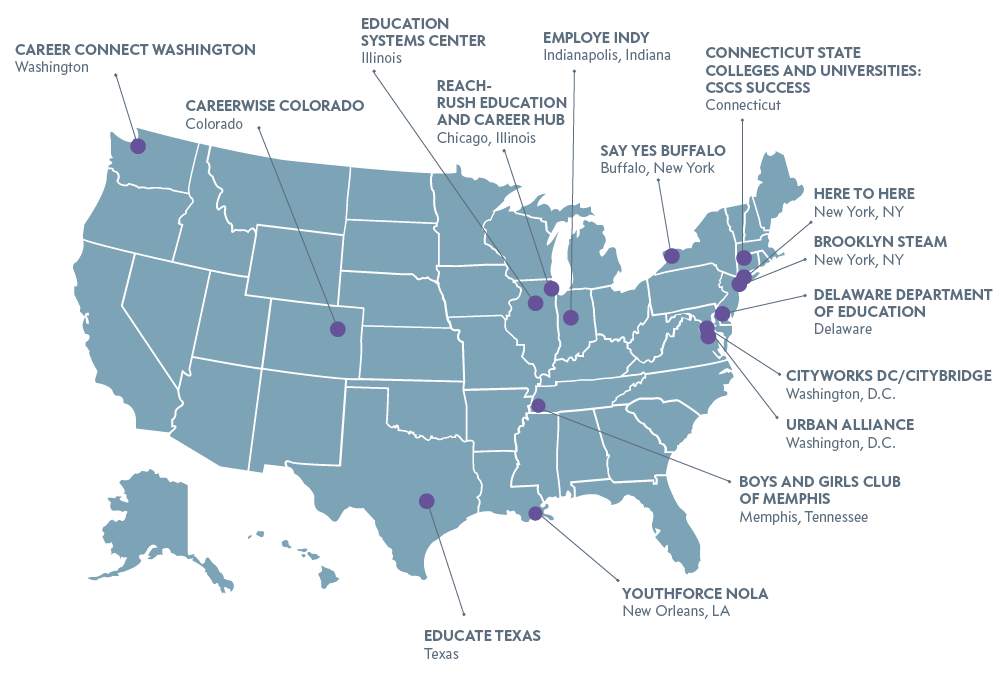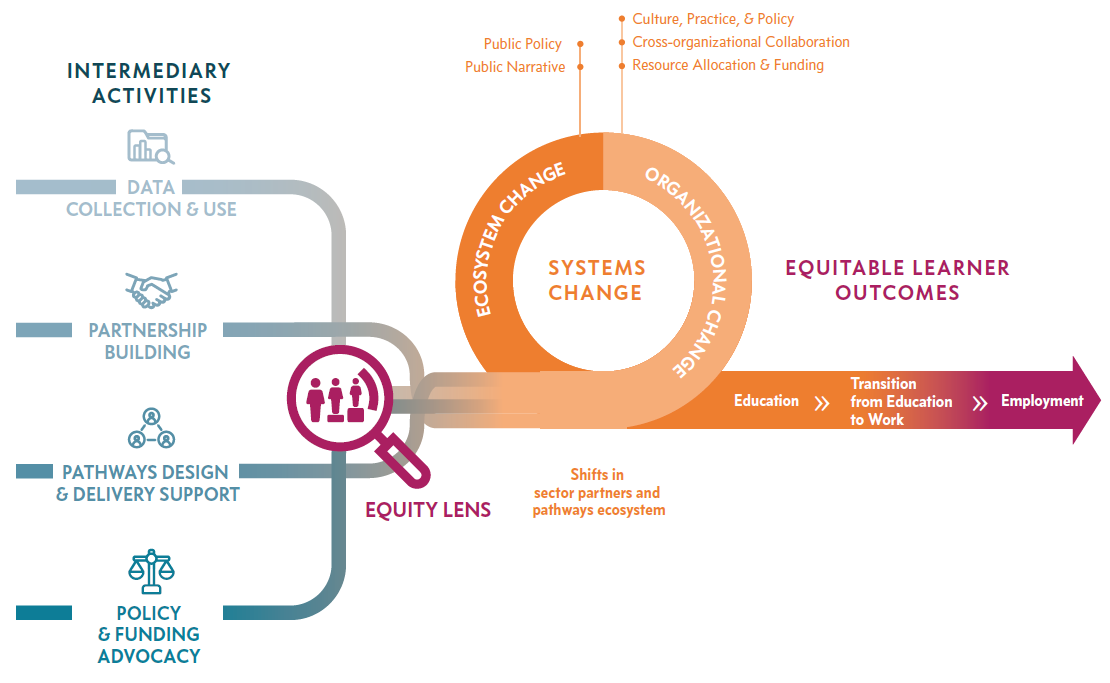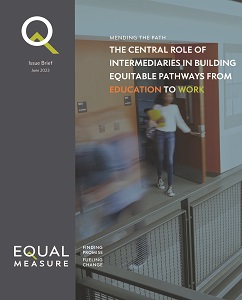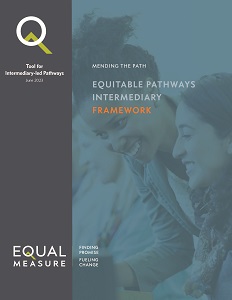by Kimberly Braxton and Robert Roach, Directors, Equal Measure
How might the education-to-work system be reimagined so that all young people have access to equitable opportunities and experiences?
Virtually every step along the journey from school to career showcases the barriers raised by our country’s history of systemic and structural racism. These gaps in access contribute to inequitable outcomes in both college completion and employment. A few examples:
- Learners of color and learners experiencing poverty tend to have less access than white and higher-income learners to early college opportunities, like Advanced Placement and dual enrollment courses, which support college-going. Later on, underserved students are less likely to enroll in postsecondary programs and earn degrees.
- The opportunity gaps persist after college. White college graduates are more likely than Black and Latine graduates to be employed after program completion, and they tend to earn more once hired.
In the issue brief Mending the Path: The Central Role of Intermediaries in Building Equitable Pathways from Education to Work, Equal Measure synthesizes findings from its learning and evaluation engagement focused on the Building Equitable Pathways initiative, which was funded by the Bill & Melinda Gates Foundation from 2019–2023. The investment promoted the development, validation, and codification of exemplary models of intermediary organizations that are connecting K–12 and postsecondary education with the private sector by coordinating and aligning education and career pathways. Equal Measure’s engagement sought to elevate the work of 15 intermediaries in the Building Equitable Pathways Community of Practice and their influence on local, regional, and state pathways ecosystems. For more about the Community of Practice facilitated by JFF, visit the JFF website.
In this blog post, we share key takeaways from the learning engagement.
What did we learn about pathways intermediaries?
Pathways intermediaries play a central role in forging a new system in which K–12, postsecondary, and workforce partners collaborate to create conditions that lead to more learners of color and learners experiencing poverty completing education and securing good jobs.
An intermediary may be a standalone nonprofit organization, workforce development board, a higher education institution, or another organization type. A pathways intermediary provides leadership and management capacity to enable sector partners to execute their individual and collective roles in pathways programming. These intermediaries sit at the center of an education and employment ecosystem, brokering partnerships and coordinating activities between K–12, postsecondary, and employers as they work with partners to integrate structures and supports that enable learners to successfully navigate from high school to a career with upward mobility.
Intermediaries consider their assets and strengths, other organizations operating in the ecosystem, and their areas of focus as they prioritize their resources and activities. Despite commonalities across them, no one-size-fits-all model exists for intermediaries. While the intermediary’s unique role is to convene partners and forge shared vision and accountability to learners, all other roles and functions can be shared across organizations that participate in the pathways partnership. For example, one organization may be well-positioned to take on the role of data lead based on its track record for collecting, analyzing, reporting on, and helping others to use labor market information. Another organization might have a strong policy arm and can assume leadership in helping the partners to strategize around a policy agenda for creating equitable pathways.
Communities need leadership to bring systems together to mend broken education and career pathways. Pathways intermediaries are playing that role.

Building Equitable Pathways Community of Practice Organizations
What did we learn about equitable pathways?
To build more equitable pathways systems, equity must be the driving force guiding the individual and collective efforts of intermediaries, their sector partners, and other influential actors at the local, regional, and state levels.
“Equitable pathways” refer to the quality of pathway activities and system changes in working to disrupt organizational and institutional status quo and achieve fairness and justice for members of historically marginalized communities, including communities of color and low-income communities. Without a joint, coordinated effort to increase equity, systems will continue to fail learners of color and learners experiencing poverty. We expect that more intensive equity-minded practice within communities, led by intermediaries, will prompt organizational and ecosystem changes that benefit learners.
Using qualitative research methods, Equal Measure codified learning about how intermediaries lead equitable pathways through the development of the Equitable Pathways Intermediary Framework. The framework articulates 31 intermediary activities in four key categories (Data Collection and Use; Partnership Building; Pathways Design and Delivery Support; and Policy and Funding Advocacy; with Equity cutting across these), connects the activities to five areas of systems change among sector partners (Culture, Practice, and Policy; Cross-organizational Collaboration; and Resource Allocation and Funding) and in the broader pathways ecosystem (Public Policy and Public Narrative) that lead to 20 improved and equitable learner outcomes across three categories (Education; Transition from Education to Work; and Employment).

Equitable Pathways Intermediary Framework
“All of this [we do] through an equity lens. The system is working for high-income students; it’s working for white students. All of this is to support the students in [our state] for whom the system is not working, for students not getting postsecondary credentials. … We’ve got a lot of work to do in closing those discrepancies.”
—Intermediary staff member
What do we see as the next steps in this work?
Funders, technical assistance providers, and researchers can help intermediaries overcome challenges in their pursuit of leading equitable pathways.
Intermediaries face common, persistent challenges in collecting and using learner data, engaging learners and sector partners in meaningful ways, and diversifying revenue. Funders, technical assistance providers, and researchers can help intermediaries break through these roadblocks, expanding opportunities for intermediaries to deepen their impact. Our brief provides examples of how they can do this.

